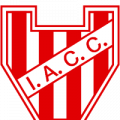A goalless draw against Leicester in the Premier League last weekend completed hat-trick 0-0 draws for Chelsea.
Those games are unlikely to be remembered for a long time and it certainly added to the Blues' fans' frustration over the attacking department of the team.
However, not only in that game, Chelsea have often looked toothless this season and have often struggled to break down opposition tight defence, especially when they defend in numbers. Has the system change to 3-5-2 affected the team's capability to score?
Promising start but disappointing results
Chelsea manager Antonio Conte decision to switched to his favoured 3-5-2 – or specifically 3-5-1-1 – was responded well initially. A 2-1 win over Tottenham Hotspur at Wembley Stadium in August 2017 cemented the belief of the fans that the system change was the answer of early season problems.
Introducing Tiémoué Bakayoko as an extra midfielder to accompany N'Golo Kanté and Cesc Fabregas resulted in Chelsea being able to dominate the midfield battle against Spurs' 3-4-3.
Scudetto similarities
On paper, Conte clearly planned to replicate his renowned Juventus side, which practically put his name among world top managers. Fabregas was assigned deep creative role which was occupied by Andrea Pirlo, alongside midfield-engine duo of Kanté and Bakayoko or Danny Drinkwater in recent games, the role of Arturo Vidal and Claudio Marchisio or Paul Pogba in their Juventus days.
In offensive positions, Conte has on both occasions paired the smaller, agile forward – Carlos Tevez or Sebastian Giovinco at Juventus, Eden Hazard at Chelsea – and a big, aerially superior target-man – Alessandro Matri or Fernando Llorente at Juventus, Alvaro Morata at Chelsea.
Some good, but more bad
The new formation gets the best of Fabregas and allows him more minutes on the pitch, as last season with two-man midfield, he mostly came on from the bench. The licence to solely focus on creating chances by pinging long balls from deep or advancing forward to pull through passes in between defenders makes him a main creative player. The Spaniard after all has created a total of 61 chances this season, ranked third in Premier League, only below Mesut Ozil (62) and Kevin de Bruyne (68).
However, the new system comes with an expense of an additional winger that 3-4-3 offered, which either Willian or Pedro used to occupy. In many occasions, when Chelsea attack, Hazard and Morata are isolated upfront, especially on counter attacks. Playing two players up front also doesn't make it any easier for the forwards, as opposition defenders can focus on marking two players instead of three.
Conte has tried to add bodies up front by ordering one midfielder – usually Bakayoko – to make runs to opposition's penalty box. Yet, all three of Chelsea's midfielders have only combined four Premier League goals this season, the same number of goals as Pedro, who has only started 11 Premier League games this season.
How can it be fixed?
Bakayoko, perhaps still needing time to adapt, hasn't lived up to his expectations. Fabregas, despite his chance creation ability, isn't the man to get you the ball past the goal keepers. And Kanté, although he surprisingly has had a significant improvement going forward, is only averaging 0.9 shot per game.
Chelsea simply lack a Frank Lampard-esque player, a midfielder who drives forward, brings presence in penalty box and offers an alternative goal-scoring source. This specific problem puts this window's signing of Ross Barkley into some perspective, even though it is too soon to judge him for now.
Despite experimenting to play 3-4-3 with Hazard as a false-nine while Morata was out injured, the Italian will probably stick to 3-5-2 for this season. Willian and Pedro's underwhelming form and the fact that both are getting into their thirties, isn't exactly forcing Conte's hand.
With rumours that Charly Musonda is on his way to get some loan experiences somewhere else, if Conte plans to revert back to 3-4-3, an additional signing of a winger or wide forward may also be needed.









































